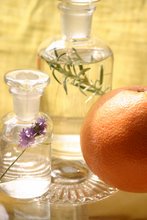#7 is to be avoided due to leaching of bisphenol A (BPA). Also avoid #1 found with most bottled water. Avoid #3 and #6. More on these below.
As for BPA bottles, the rule of thumb is if the plastic is cloudy, not crystal clear, and you can squeeze it relatively easy, then it probably does not contain BPA. If the plastic is solid and crystal clear than it is usually polycarbonate - #7 and not safe.
Here's a breakdown.
#1 PETE or PET (NOT SAFE due to antimony leaching)
Polyethylene terephthalate
#2 HDPE (SAFE)
High density polyethylene
#3 PVC or V (NOT SAFE due to phthalates)
Polyvinyl chloride
#4 LDPE (SAFE)
Low density polyethylene
#5 PP (SAFE)
Polypropylene
#6 PS (NOT SAFE for hot liquids, alcohol or fatty foods due to styrene)
Polystyrene
#7 plastics including polycarbonates that contain bisphenol A (BPA) (NOT SAFE due to BPA)
Polycarbonate
The tips being given to avoid BPA and other toxic components of plastic are:
A) Don't microwave using plastic
B) Avoid canned food (not all canned food use plastic liners, so inspect and then avoid if they do)
C) Avoid milk containers that have plastic liners inside
D) Use glass instead of plastic whenever possible
E) Avoid plastic wrap that is made with BPA (Saran is safe)
F) Don't use Lexan items
G) Beware of some Nalgene bottles (the hard ones) - though you can buy safe, soft #4 Nalgene bottles
H) Buy BPA free baby bottles from Medela (Medela is all BPA free - good for them for being ahead of the pack on this) and Born Free. Gerber has a few BPA free bottles, but most have it. Throw away Avent, Evenflo, Dr. Browns, Playtex and other hard plastic bottles. And shame on them for sticking to their guns and using BPA in the face of all the studies. As a new father I will never forget this and I am furious at them! More on this at the Z Recommends. Great blog by the way.
The hard science on BPA listed here in Word format directly from Frederick S. vom Saal, Ph.D. website.
Here is Dr. Weil on the subject and here.
Detroit Free Press/Chicago Tribune here.
ABC News here.
LA Times here.
Short history of bisphenol A from the Washington Post.
Of course Wiki.
National Geographic on the debate. And here on plastics.
Baby 411 article on BPA.
Bit more hard science The Toxic Origins of Disease in PLoS
DogVitals dog supplement - helping dogs live a younger, healthier life


4 comments:
Help. I have 65 #2 plastic buckets full of wheat, sugar, oats, beans, lentils, and more. 2000lbs., $2000.00 worth. What should I do. I can can it in tin #10 cans but it will cost a lot and a lot of time . But I need some proof. I have not read one thing that says stay away from it. Help. What shoudl I do.
kerilynn71@hotmail.com
The article above suggested that #2 is relatively safe, as plastics go.
But, if you want to increase your safety (which might be wise since you are going for long-term storage, which gives plenty of time for stuff to transfer out of the plastic), consider buying metalized bag liners that are available precisely for the purpose of providing an inner liner for long-term emergency storage. You might want to buy fresh oxygen absorbers since you will have to pour the stuff out and back in (or between). If it is already stored with the metalized bags, then you are already using the current technology for the purpose, so leave well enough alone.
How do I know what plastic cutting broads are safe since they do not have numbers? Should I dump the plastic and go to all hardwood cutting broads? Thanks.
Don't put your bucket full of lentils in the microwave or dishwasher, and you should minimize any exposure risks. Don't freak out and rush to conclusions. The amount of BPA you've ingested over the past X years compared to the amount that may be passed into your current food product is trivial. Just phase out the toxic products.
Post a Comment